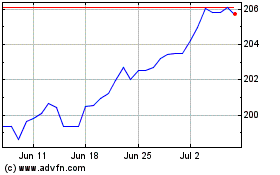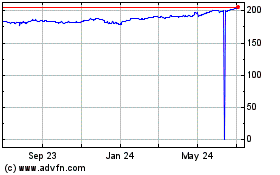UK Industrial Output Falls; Visible Trade Gap At 5-Month High
April 07 2017 - 3:08AM
RTTF2
UK industrial and construction output declined unexpectedly in
February, signaling a slowdown in the first quarter. Moreover, the
visible trade deficit widened to a 5-month high.
Largely reflecting weak energy demand, industrial output dropped
unexpectedly by 0.7 percent month-on-month in February, figures
from the Office for National Statistics showed Friday.
Economists had forecast output to grow 0.2 percent after falling
0.3 percent in January.
Manufacturing output dropped only 0.1 percent after easing 1
percent in January. Nonetheless, the drop was in contrast to the
expected growth of 0.3 percent.
Year-on-year, industrial production growth slowed to 2.8 percent
from 3.3 percent in January. Economists had forecast a 3.7 percent
increase.
Meanwhile, growth in manufacturing accelerated to 3.3 percent
from 2.6 percent, but slower than the expected 3.9 percent.
Driven by a fall in all new work, construction output decreased
1.7 percent from January, confounding expectations for an increase
of 0.1 percent and marked the biggest fall since March 2016.
Year-on-year, output rose 0.5 percent.
In a separate communique, the ONS said the visible trade deficit
increased unexpectedly to GBP 12.46 billion in February from GBP
11.97 billion in the prior month. The shortfall was forecast to
narrow to GBP 10.9 billion.
This was the biggest deficit since September 2016.
Including goods and services, the trade gap widened to GBP 3.66
billion from GBP 2.97 billion in January. The increase reflects a
GBP 0.4 billion decrease in exports and a GBP 0.3 billion increase
in imports.
The trade in services showed a surplus of GBP 8.78 billion
compared to GBP 8.99 billion in previous month.
Despite the disappointing data in February, with temporary
factors at play, Ruth Gregory, an economist at Capital Economics,
said she remains optimistic that there should be some bounce back
at the end of the first quarter.
IHS Markit Economist Howard Archer, said a disappointing package
of data for the UK economy which fuels suspicion that GDP growth
slowed markedly, largely due to consumers becoming more
cautious.
The economist suspects UK GDP growth in the first quarter of
2017 slowed to 0.4 percent.
Sterling vs Yen (FX:GBPJPY)
Forex Chart
From Aug 2024 to Sep 2024

Sterling vs Yen (FX:GBPJPY)
Forex Chart
From Sep 2023 to Sep 2024
